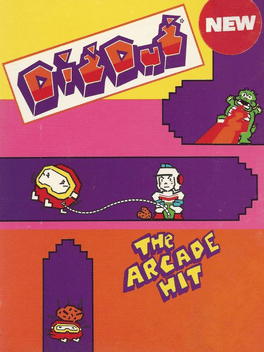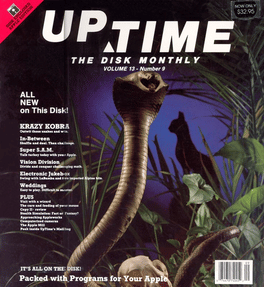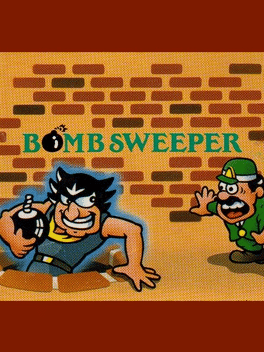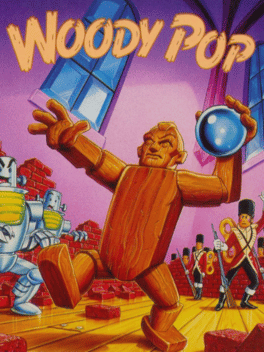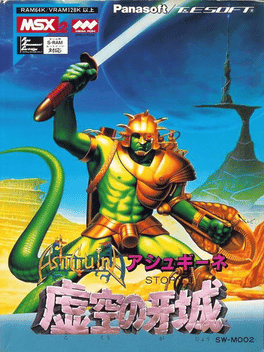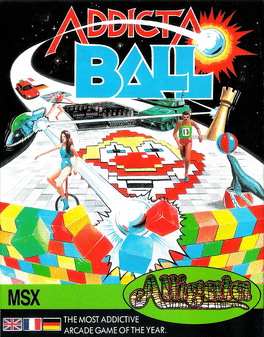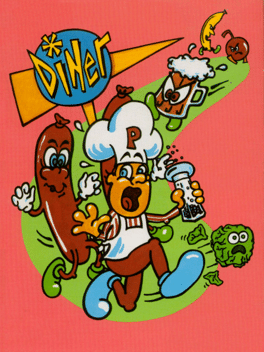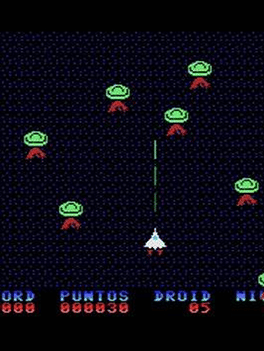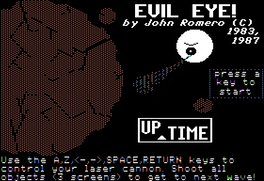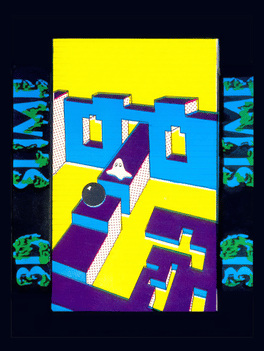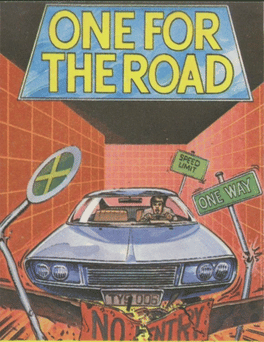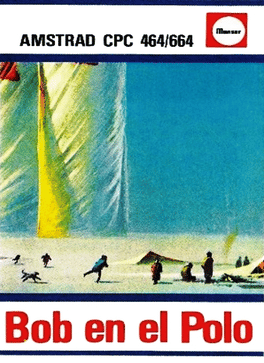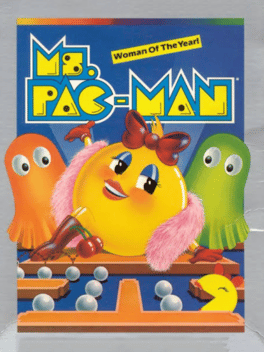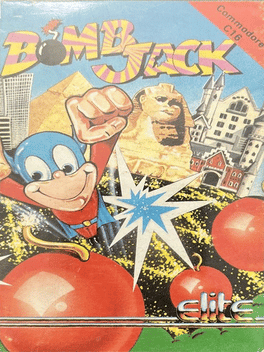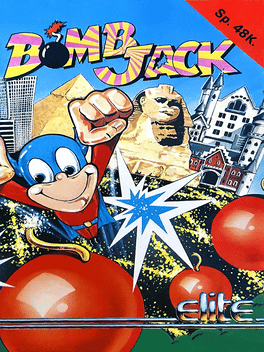New Game Boy Games - Page 231
-
Dig Dug
1987
Dig Dug
1987
Dig Dug is a 1-2 player arcade game in which you have to use your shovel to dig your way through the earth. Stopping you from doing this are two monsters, called Pooka and Fygar, who will continually chase you around. The only weapon that you carry is an air pump, which you can use to inflate the monsters to the point where they explode. (if you start to inflate them but stop doing so, the monsters will get turned back to their normal selves). Furthermore, rocks are scattered throughout the earth, and you can use these rocks to squash them. If the monsters do not find you for several seconds, they will eventually get turned into ghosts, which can walk through the earth. They are invincible and cannot be killed. From time to time, vegetables will appear in the center, and you can get these for points. -
Krazy Kobra
1987
Krazy Kobra
1987
It's the classic game of Snake, except released back when it was still fairly new. This version however is an extreme challenge with 50 custom-designed levels to rival the mighty Snake Byte. -
Bomb Sweeper
1987
Bomb Sweeper
1987
Bombsweeper was a multi-screen Game & Watch video game released in June of 1987. The game was never released in Japan. The game's model number was BD-62. Using the D-pad to move John Solver, you must reach at least one of the bombs hidden in the walls to clear the screen and receive a bonus for the time remaining. The only obstacles in your path are the walls, which you must either maneuver around or push them along provided there is no obstruction in the way. Some levels are a test of speed, others are a test of logic and intelligence. -
Woody Pop
1987
-
Gondomania
1987
Gondomania
1987
Arcade game released by Data East in 1987. Top-down shooter featuring rotating joysticks. -
Zero Gravity
1987
Zero Gravity
1987
Zero Gravity is an early B&W arcade game for Macintosh, in which you try to center your floating character in the center of the gravity chamber. A white dot appears to indicate where the gravity force is currently applied and you move accordingly to stay away from the chamber's sides. -
AshGuine Story II: Kokuu no Gajou
1987
The time had come to put an end to the long and unproductive battle. This was brought about by the Azumural, the third race that came from the heavens. While both countries were fighting, the Azumural steadily developed their scientific capabilities and in the end even acquired aviation technology. They got to know about the world beyond the Ring. Because of their brutal nature they made a temporary alliance with the Ghouls and invaded Eletria. The balance of fight largely deteriorated and the Eletrians barricaded themselves in the last remaining fortress Nesha Castle -
Addicta Ball
1987
Addicta Ball
1987
Addicta Ball is a Breakout clone with a twist. Players control a paddle to break down a wall of different block by bouncing a ball against them, but instead of removing them to clear a level, players need to make a path for the paddle to pass through. As time goes on, the bricks move lower down the screen so the path needs to be created as long as there is an opportunity. The game is over when the bricks hit the paddle. There are different kinds of power-ups, weapons, a thruster to move over the screen, and a barrier at the bottom of the screen that prevents the ball from disappearing, but it degrades over time. -
Diner
1987
Diner
1987
In this unofficial sequel to the arcade game BurgerTime, the Rotten Foods (Hot Dogs, Cherries, Bananas, and their leader Mugsy, the Mug o' Root Beer) have thrown lunch all over the diner and Peter Pepper has to get it back on the plate. -
Droids: The White Witch
1987
Almost no information on this game can be found online, but this is a Star Wars game for the MSX featuring top-down arcade shooting gameplay. It is based off of the Droids TV show from the 1980's, the player controls the ship featured in the show. -
Gateway to Hell
1987
-
Evil Eye
1987
-
Sarlmoor
1986
-
3D Slime
1986
3D Slime
1986
3D Slime is a fast-paced game that blends Pac-Man's classic munching with an isometric perspective like Gyroscope. Players control Green Slime, an alien forced by the villainous Rodrick to infiltrate Robocity and collect purple pyramids while evading black bowling balls across pseudo-3D levels with irregular patterns, inaccessible spaces, and varying elevations that require luring the balls away to clear paths. -
One for the Road
1986
One for the Road
1986
Originally part of a compilation, One for the Road is a clone of Pac-Man, where the player drives a car around the maze picking up the Cat's Eye's, avoiding the hostile road signs. The road signs become temporarily harmless after collecting an oil can. -
Bob en el Polo
1986
Bob en el Polo
1986
The objective of Bob en el polo is quite simple: eat a certain number of eggs in each of the 10 levels of the game, avoiding the enemies, in a limited amount of time. The player can also move the blocks on the screen, like in Pengo, but without the possibility to kill enemies. Blocks can only be moved for defensive purposes. The start level can be selected from the main menu. -
Ms. Pac-Man
1986
Ms. Pac-Man
1986
Pac-Man is in love! And what a star his sweetheart is, with her red ribbon and long eyelashes. Just like her leading man, Ms. Pac-Man chomps her way through mazes as she battles four ghosts. Round and round, back and forth, across the stage she races as she gobbles up dots, energy pills, teddy bears, fruit, and pretzels. Can she escape the marauding ghosts? Or will this be her final curtain? Will Pac-Man ever see his lady love again? -
Werner: Let's Go!
1986
Werner: Let's Go!
1986
Werner: Let's go! is based on the German comics character Werner and offers five mini games: Meiern is a dice game with an emphasis on bluffing. The basic rules: A player makes a hidden dice throw and checks the result. Then he gives the dice cup to the next player and says his result which may be true or a bluff (the said result needs to be higher than what the player before said). The next player either has the choice to throw the dice or to call a bluff. In the latter variant he opens up the dice cup and either the bluffer or the wrongful accuser gets a minus point. A side-scrolling car drive in which the player has to avoid obstacles by accelerating or ducking. Another car drive which is essentially the same with items which have to be picked up and used at the right time. The fourth game is about building a motorcycle. The player needs to choose between a variety of parts. This game is lost after twelve incorrect guesses. A motorcycle drive where the camera is directly placed behind the motorcycle. The go -
Bomb Jack
1986
Bomb Jack
1986
In Bomb Jack, the player controls Jack, who must collect all the bombs in order to complete the current round and go onto the next one. -
Bomb Jack
1986
Bomb Jack
1986
In Bomb Jack, the player controls Jack, who must collect all the bombs in order to complete the current round and go onto the next one. This sounds easy, right? Wrong! Making Jack's task difficult are numerous enemies such as birds, mummies, turtles, and orbs. In each round, collecting a number of bombs results in a bonus coin appearing, and collecting this coin will make the player's score increase 2 to 4 times. More often than not, the "power ball" appears, and when you collect this, you can defeat enemies and have more time to collect all the bombs. There is also the "E" coin, which gives Jack one additional life, but rarely does this coin appear. The more you progress through the game, the more difficult it becomes, as enemies travel more quickly to get you.
